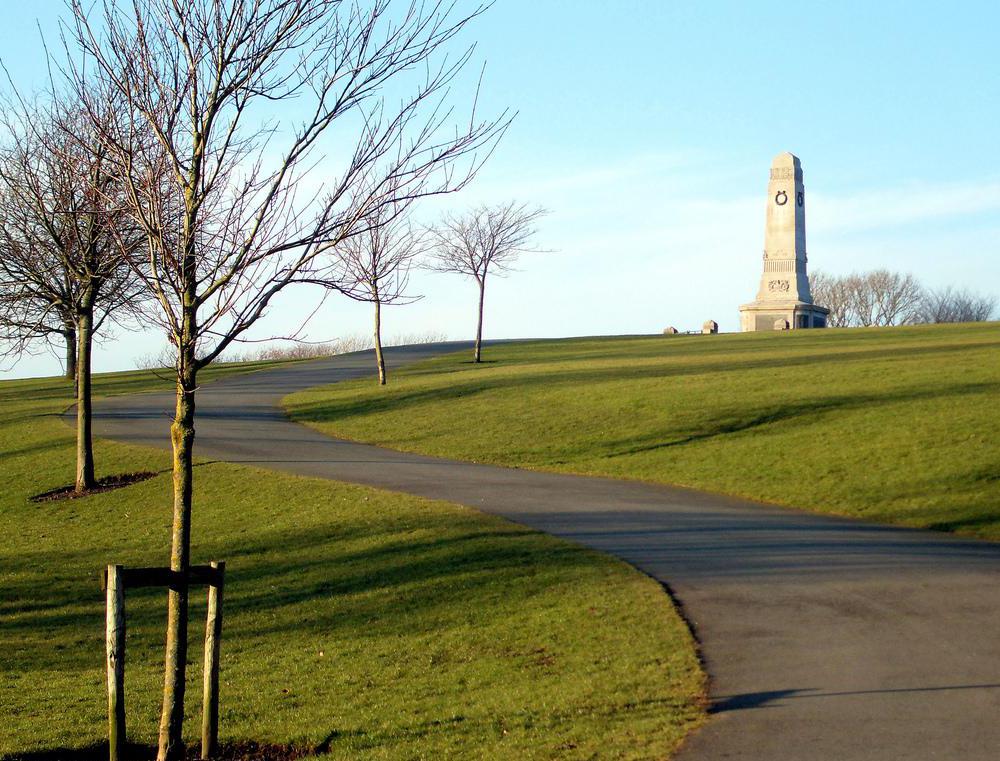At WiseGEEK, we're committed to delivering accurate, trustworthy information. Our expert-authored content is rigorously fact-checked and sourced from credible authorities. Discover how we uphold the highest standards in providing you with reliable knowledge.
What is a Cenotaph?
A cenotaph is a structure erected to honor the dead. The defining characteristic of a cenotaph is that the remains of the person or people it commemorates are buried elsewhere, making a cenotaph a memorial marker, rather than a grave marker. Some of the most famous cenotaphs honor groups of dead, and are often prominently displayed in the public areas of major cities; many regional capitals, for example, have a memorial to their war dead.
The term cenotaph comes from a Greek phrase which means “empty tomb.” The Greeks wrote about numerous cenotaphs which apparently existed in antiquity, although few survive to this day, and the tradition of creating cenotaphs has clearly endured in many regions of the world. Some cenotaphs become major shrines or monuments, with pilgrims visiting the site to commemorate the person who is honored.

There are several reasons for a cenotaph to be constructed. Originally, cenotaphs were created when someone's body was removed to a new location, a common practice in antiquity. Typically, people would be buried close to the site where they died, and their family members might choose to move them later, leaving a literally empty tomb behind. In the case of notable individuals, these empty tombs became cenotaphs to honor the person who was once interred at the site.
Cenotaphs have also been established to honor the dead when their remains have not been recovered, as in the instance of people who are lost at sea, buried under rubble, or incinerated, as in the case of the victims of the atom bombs at Hiroshima and Nagasaki. A cenotaph may also be created simply to honor a notable dead person; for example, the hometowns of famous writers, musicians, and other artists often have cenotaphs which pay homage to these individuals.
A group cenotaph usually honors the collective dead associated with a war or natural disaster, although they may also commemorate people linked by the manner of their deaths or deeds, such as stillborn infants, victims of drunk drivers, or organ donors. Group cenotaphs are often the sites of memorial ceremonies and events to honor the dead, and they may be decorated with wreaths and other offerings from visitors.
In addition to being located in a public place or a graveyard, a cenotaph can also be situated at a private home. Some families prefer to honor their dead at home for a variety of reasons, and they may install a cenotaph in an area of the garden dedicated to contemplation.
AS FEATURED ON:
AS FEATURED ON:











Discussion Comments
Often we define cenotaph as in remembrance of war dead, because it is often used in that context. Usually any other kind of structure built to honor the dead is called a memorial. The most moving cenotaphs I have seen are small fountains, circles of rocks, or trees that have a small inscription set into the ground bearing a dedication to one person.
One of the most famous cenotaphs that I can think of that was visually stunning, was actually never built and wasn't war related at all. The cenotaph for Isaac Newton designed by Étienne-Louis Boullée would have included a planetarium. Unfortunately it just wasn't realistic to build it at the time.
I've noticed that many war memorial cenotaphs that were built to honor the war dead following the First World War were repurposed afterward to encompass both World Wars. The small war memorial tower in my hometown was built before World War II, but now has plaques with the names of local war dead from both World Wars.
In my travels I have noticed this seems to be fairly common among the British Commonwealth countries. For many of them, the towns and cities were probably either too new or too small to have sent any soldiers to any wars prior to the First World War.
I am wondering how older towns handle this, such as in the United States where many towns would have a Civil War memorial... did the township repurpose the Civil War memorial to honor the war dead of both world wars as well, or did they build new cenotaphs?
Most cenotaphs I have seen have been very grand and somber affairs. There is a large one near my home that is dedicated the soldiers in our area that gave their lives during the World Wars.
What I like about the cenotaph that they built is that it reminds me of my grandfather that passed on in the Second World War. I grew up hearing so many stories about him.
I also like the memorials that also list the names of those that have passed. Sometimes it is a good idea to just visit these war remembrance structures and really think about what has been done in order to give us the freedom we take for granted so much these days.
Post your comments